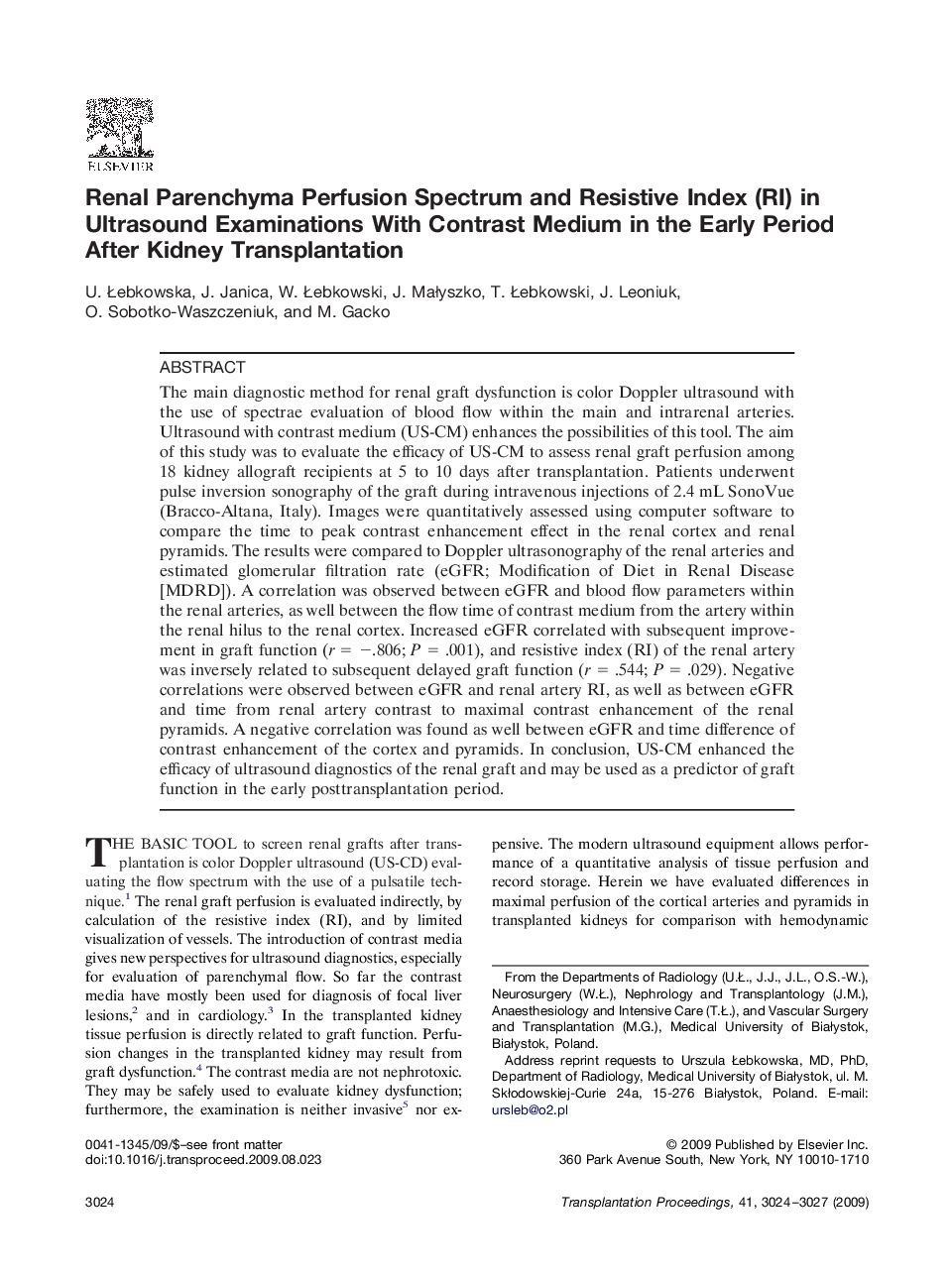| Article ID | Journal | Published Year | Pages | File Type |
|---|---|---|---|---|
| 4258979 | Transplantation Proceedings | 2009 | 4 Pages |
The main diagnostic method for renal graft dysfunction is color Doppler ultrasound with the use of spectrae evaluation of blood flow within the main and intrarenal arteries. Ultrasound with contrast medium (US-CM) enhances the possibilities of this tool. The aim of this study was to evaluate the efficacy of US-CM to assess renal graft perfusion among 18 kidney allograft recipients at 5 to 10 days after transplantation. Patients underwent pulse inversion sonography of the graft during intravenous injections of 2.4 mL SonoVue (Bracco-Altana, Italy). Images were quantitatively assessed using computer software to compare the time to peak contrast enhancement effect in the renal cortex and renal pyramids. The results were compared to Doppler ultrasonography of the renal arteries and estimated glomerular filtration rate (eGFR; Modification of Diet in Renal Disease [MDRD]). A correlation was observed between eGFR and blood flow parameters within the renal arteries, as well between the flow time of contrast medium from the artery within the renal hilus to the renal cortex. Increased eGFR correlated with subsequent improvement in graft function (r = −.806; P = .001), and resistive index (RI) of the renal artery was inversely related to subsequent delayed graft function (r = .544; P = .029). Negative correlations were observed between eGFR and renal artery RI, as well as between eGFR and time from renal artery contrast to maximal contrast enhancement of the renal pyramids. A negative correlation was found as well between eGFR and time difference of contrast enhancement of the cortex and pyramids. In conclusion, US-CM enhanced the efficacy of ultrasound diagnostics of the renal graft and may be used as a predictor of graft function in the early posttransplantation period.
